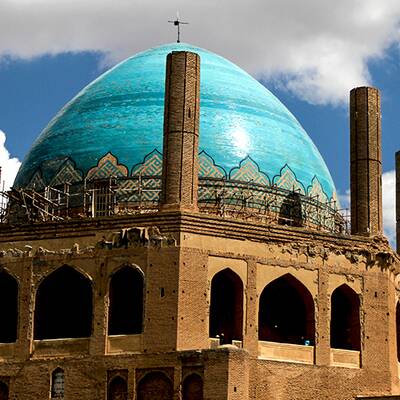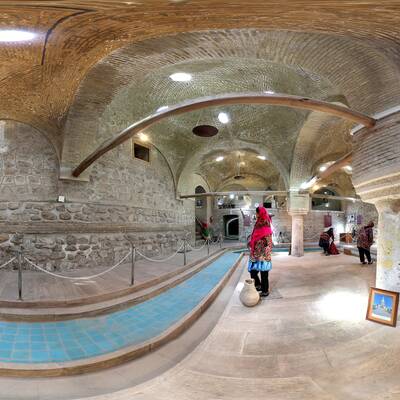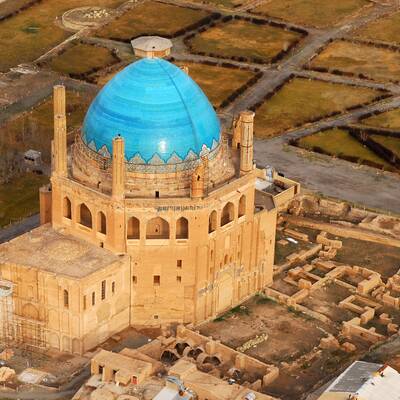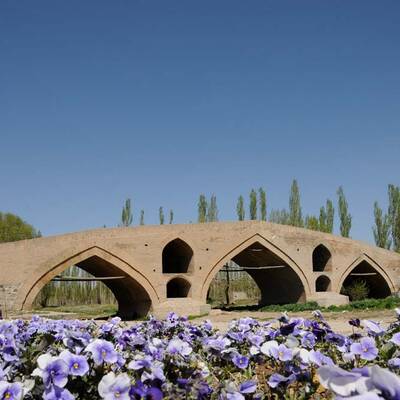
Museum of Manuscripts of Zanjan
One of the tourism destinations of Zanjan province is the tomb of Mirza Mehdi or the museum of manuscripts of Zanjan. Ayatollah Haj Mirza Mehdi Zanjani is the son of late Haj Seyed Abu Abdollah Musavi from the Mirzai tribes of Zanjan. He was born in 1896 and finished his elementary education in Zanjan. He then moved to Tehran and studied under Agha Ali Zonuzi, the author of Baday’e ol-Hekam, and went to the holy city of Najaf in 1937. He was a skilled teacher, virtuous scholar and had high morals. He passed away in 1981 in his birth town, Zanjan.
By the agreement of his heirs, the building was dedicated to the Cultural Heritage, Handicrafts and Tourism of Iran Organization and from then it was used as a cultural center. The building of the tomb, an area about seven hundred square meters, is in the form of a big rectangular. The main entrance of the building is a beautiful pentagon structure. Its ceiling is decorated with low arches, practically Kalil (a kind of Iranian arch that does not have a pointed top) and beautiful brickworks on the Gushwareh or the Squinch, a structure that is built to acts as the joint between the square plan of the room and the circular plan of the dome. These structures also provide a perfect foundation for Araghchin, a kind of sphere-like structure on the upper parts of domes.
The museum consists of a yard and a building on its north. The dome of the main room is Do Pusteh or double dome; This means that it is consisted of two layers. The second room of the museum is similar to the main and there are two tombstones in it. There are seats in the four sides of the entrance area. The upper parts of the iwans on the east and northeast side have had stuccos in the form of blue muqarnas or honeycomb vaults. The building has two same-looking columned iwans in two entrance sides and more space behind them. Today, one hundred and twenty pieces of manuscripts and holy Quran constitute the collection of this museum. There are also fifty samples of stone reliefs of which the oldest belongs to the 13th century, the Seljuk dynasty. These objects have been found during the excavations in the site of Dome of Soltaniyeh, Zanjan, and belong to Ilkhanate, Timurid, Safavid and Qajar dynasties. They include tombstones, steles, and reliefs that are related to the building. In 2009, the building turned into a museum for manuscripts under the administration of Cultural Heritage, Handicrafts and Tourism of Iran Organization. The museum is located in Imam Khomeini Street, in front of the City Hall No.3, and is open every day except Mondays.


.jpg)

.jpg)

